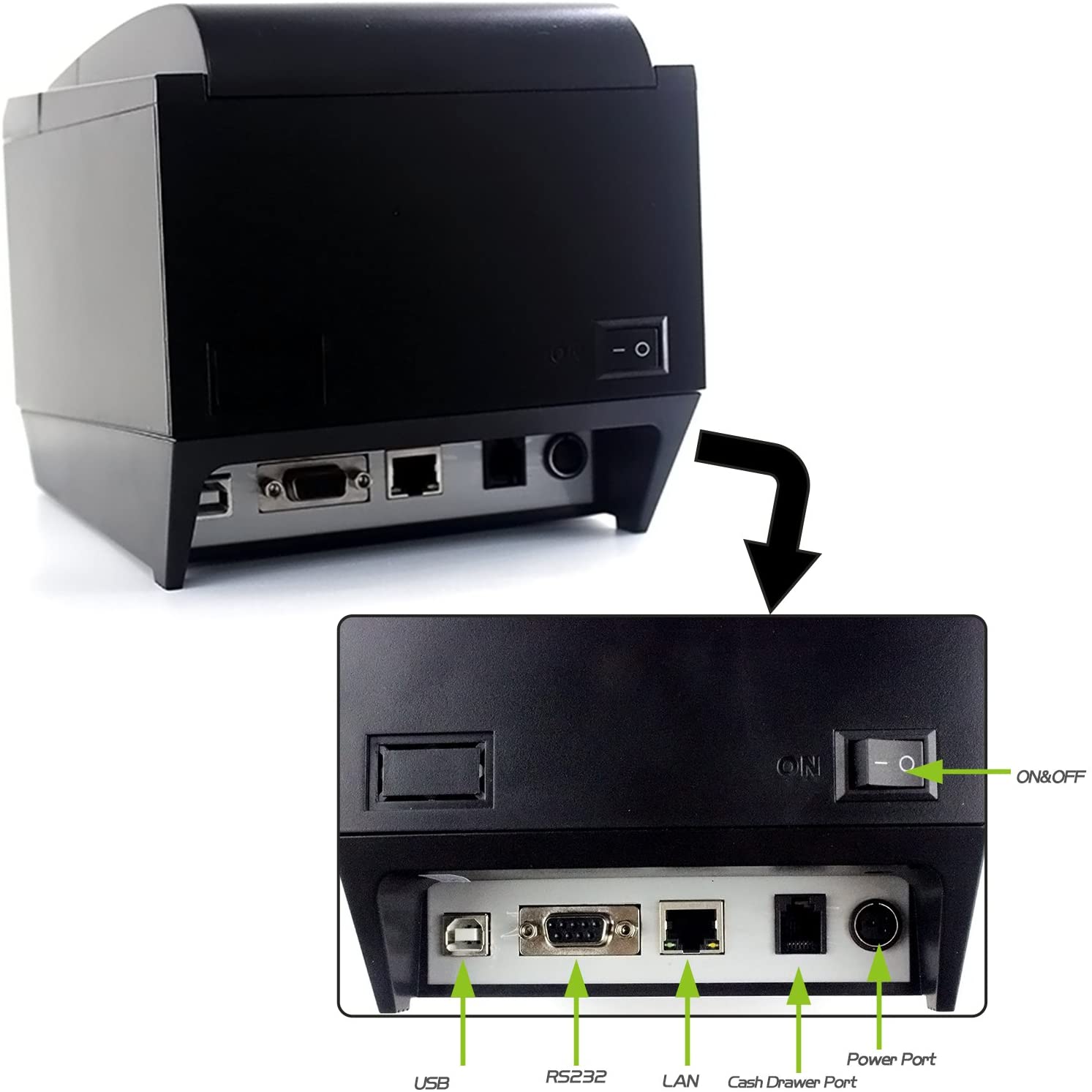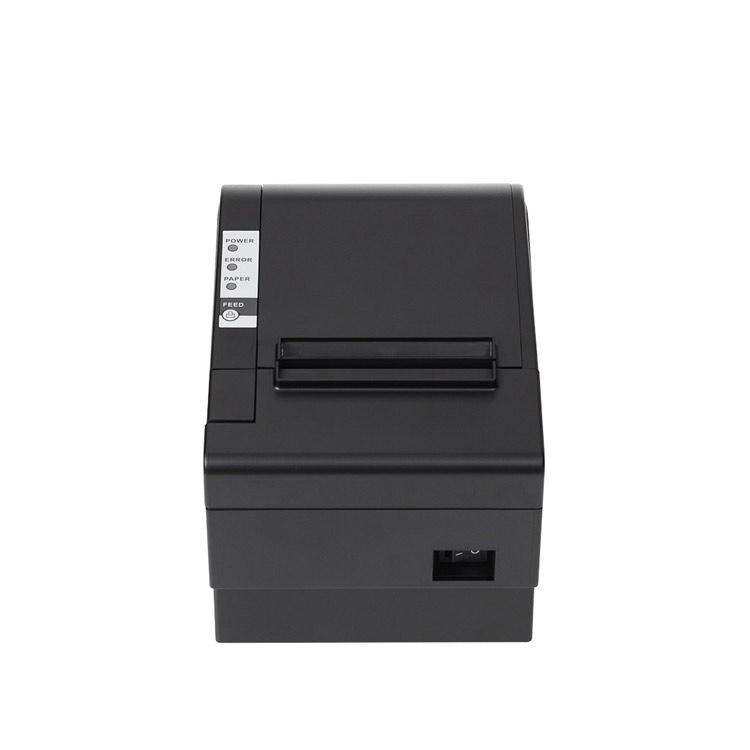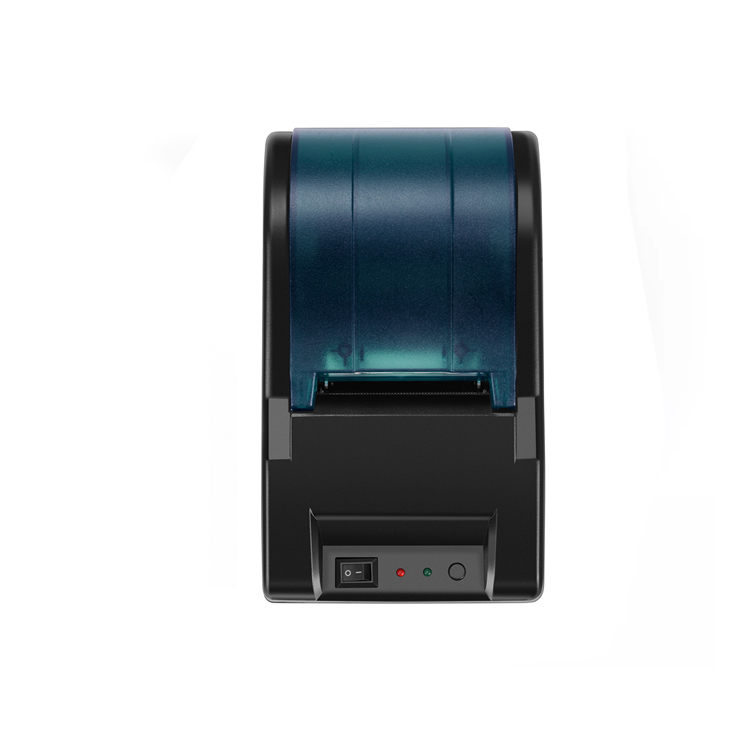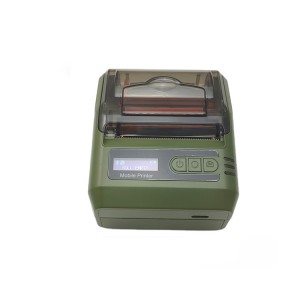In today's technological age, printer interfaces are an important bridge between the computer and the printer. They allow the computer to send commands and data to the printer for printing operations. The purpose of this article is to introduce some common types of printer interfaces, including parallel, serial, network, and other interfaces, and to discuss their features, applicable scenarios, as well as advantages and disadvantages. By understanding the functions and selection criteria of different interfaces, readers can better understand and select the printer interface that suits their needs.
Printer interface types include: USB, LAN, RS232, Bluetooth, WIFI.
1.USB Port
1.1 The USB (Universal Serial Bus) interface is a widely used standard interface for connecting computers and external devices. It has the following characteristics:
Transfer speeds: The transfer speed of a USB interface depends on the interface version and the capabilities of the connected devices and computers. USB 2.0 interfaces typically transfer data at speeds between 30 and 40 MBps (megabits per second), while USB 3.0 interfaces transfer data at speeds between 300 and 400 MBps. Therefore, USB 3.0 is faster than USB 2.0 for transferring large files or performing high-speed data transfers.
1.2 USB interfaces are widely used in a variety of scenarios, including but not limited to
Desktop printing: Most desktop printers connect to the computer via a USB interface, which provides simple plug-and-play functionality and fast data transfer speeds, making desktop printing easier and more efficient.
Shared printing: Printers can be easily shared by connecting them to a computer's USB port. Multiple computers can share the same printer without having to install separate printer drivers for each computer.
Connect external devices: The USB port can also be used to connect other external devices such as scanners, cameras, keyboards, mice, etc. These devices communicate with your computer through the USB port. These devices communicate with the computer through the USB port for data transfer and operational functions.
If you have any interest or query during the selection or use of any barcode scanner, please Click the link below send your inquiry to our official mail (admin@minj.cn) directly! MINJCODE is committed to the research and development of barcode scanner technology and application equipment, our company has 14 years of industry experience in the professional fields, and has been highly recognized by the majority of customers!

2. LAN
2.1 A LAN is a network of computers connected in a small area. It has the following characteristics:
Types of interfaces: LANs can use a variety of interface types, the most common of which is the Ethernet interface. Ethernet interfaces use twisted pair or fibre optic cable as the physical medium for connecting computers and other devices. Ethernet interfaces provide fast and reliable data transmission and can be used to enable communication within a LAN.
Long distance transmission: LANs are typically used in smaller areas such as offices, schools and homes. The Ethernet interface provides a high-speed connection within 100 metres. If you need to cover a longer distance, you can use a repeater device such as a switch or router.
2.2 There are various application scenarios for LAN, some of the main applications are listed below:
Network printing: Printers connected via a LAN can be shared by multiple computers. Users can send print commands from any computer, and the printer receives and executes the print job via the network.
File sharing: Files and folders can be shared between computers on a LAN, allowing users to easily access and edit shared resources. This is useful for team working or file sharing environments.
To summarise: A LAN is a computer network that is confined to a smaller area and uses various interface types such as Ethernet interfaces. LANs offer features such as long distance transmission, resource sharing, and security. Network interfaces can be used in scenarios such as network printing, file sharing, and online gaming.WIFI and Ethernet interfaces are common interface types used in LANs.WIFI provides a convenient network connection wirelessly, and Ethernet interfaces provide higher bandwidth and more stable connections via wired methods.
3. RS232
3.1 RS232 is a serial communications interface standard that was once widely used to connect computers and external devices for communication. The following are the characteristics of RS232:
Data transmission speed: The RS232 interface has a relatively slow transmission speed, usually with a maximum speed of 115,200 bits per second (bps).
Transmission Distance: The RS232 interface has a relatively short transmission distance, usually up to 50 feet (15 metres). If you need to cover longer distances, you may need to use communication devices such as repeaters or adapters.
Number of Transmission Lines: The RS232 interface typically uses 9 connecting lines, including data, control and ground lines.
3.2 Application scenarios for the printer RS232 interface include the following:
POS systems: In POS (Point of Sale) systems, printers are usually connected to cash registers or computers for printing receipts, tickets or labels. the RS232 interface can be used to connect printers and POS terminals for data transfer and control.
Industrial Environments: In some industrial environments, printers are required for data logging and labelling, and the RS232 interface can be used to connect the printer to industrial equipment or control systems for print-related functions.
4. Bluetooth
4.1 Characteristics of Bluetooth: Bluetooth is a wireless communication technology whose characteristics include:
Wireless connectivity
Low power consumption
Short range communication
Fast Connectivity
Multi-Device Connectivity
4.2 Application Scenarios of Printer Bluetooth Interface: The application scenarios of printer using Bluetooth interface include:
Bluetooth Label Printing: Bluetooth printers can be used to print a variety of labels, such as courier labels, price labels, etc., which are widely used in the retail and logistics industries.
Portable Printing: Bluetooth printers are usually small and portable, suitable for scenarios that require printing at any time, such as conferences, exhibitions and so on.
Choosing the right printer interface can increase printing efficiency, reduce unnecessary headaches and optimise workflow. Therefore, when purchasing a printer, careful consideration needs to be given to interface options to meet personal or work requirements.
If you are interested or have any questions about purchasing or using a receipt printer, please contact us!
Phone: +86 07523251993
E-mail: admin@minj.cn
Official website: https://www.minjcode.com/
If You Are in Business, You May Like
Recommend Reading
Post time: Nov-02-2023




